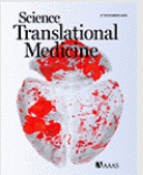 Limb-girdle muscular dystrophy type 2A (LGMD2A or LGMDR1) is a neuromuscular disorder caused by mutations in the calpain 3 gene (CAPN3). Previous experiments using adeno-associated viral (AAV) vector-mediated calpain 3 gene transfer in mice indicated cardiac toxicity associated with the ectopic expression of the calpain 3 transgene.
Limb-girdle muscular dystrophy type 2A (LGMD2A or LGMDR1) is a neuromuscular disorder caused by mutations in the calpain 3 gene (CAPN3). Previous experiments using adeno-associated viral (AAV) vector-mediated calpain 3 gene transfer in mice indicated cardiac toxicity associated with the ectopic expression of the calpain 3 transgene.
Here, the researchers, led by Isabelle Richard (Genethon), performed a preliminary dose study in a severe double-knockout mouse model deficient in calpain 3 and dysferlin. They evaluated safety and biodistribution of AAV9-desmin-hCAPN3 vector administration to nonhuman primates (NHPs). Vector administration did not lead to observable adverse effects or to detectable toxicity in NHP. Of note, the transgene expression did not produce any abnormal changes in cardiac morphology or function of injected animals while reaching therapeutic expression in skeletal muscle. Additional investigation on the underlying causes of cardiac toxicity observed after gene transfer in mice and the role of titin in this phenomenon suggest species-specific titin splicing. Mice have a reduced capacity for buffering calpain 3 activity compared to NHPs and humans.
These studies highlight a complex interplay between calpain 3 and titin binding sites and demonstrate an effective and safe profile for systemic calpain 3 vector delivery in NHP, providing critical support for the clinical potential of calpain 3 gene therapy in humans.
